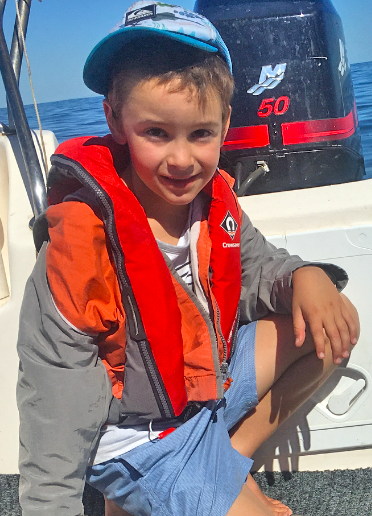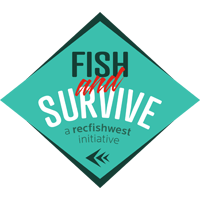
One of the most valuable things you can teach your kids is to be safe on the water.
In WA the water is a major part of most of our lives, but often people underestimate the dangers it, and especially the open ocean, can present until there is a drama and then they are completely unprepared when it matters most.
However, a few minutes explaining to kids the safety aspect of watersports could be a lifesaver someday.
One of the most simple aspects is the need to wear a lifejacket or personal floatation device (PFD) when you are on the water and this is a lesson easily taught to kids and best by example.

There was a time when these were tucked away in the depths of the bow, only to be called upon in an emergency.
Nowadays though, more and more boaters (and rock fishers) are wearing PFDs all the time when on the water.
Modern PFDs are so lightweight and comfortable you won’t even know you are wearing them and if you, or your friends and family members, are suddenly thrown in the water at least you know you won’t drown.
Some automatically inflate, so if you suffer a knock you will be kept afloat, while others need to be operated manually.

It’s all very well to have life jackets stowed away in the boat, but getting to them in an emergency might be difficult, if not impossible.
Putting your PFD on as you get into the boat is a great way to resolve this issue and also sets a great example for kids, who will be happy to wear their PFDs when they see adults doing the same.
That’s much better than a “she’ll be right attitude” which assumes nothing bad will ever happen.
PFDs are available in all sizes and there is a great range available at www.fishandsurvive.com.au .
Many tackle stores and all marine chandlery outlets also stock them.
Of course, along with choosing to wear PFDs there are rules and regulations governing what safety gear you need to carry on a boat – including things like flares, lifejackets and EPIRBs.

It pays to let younger crew members know how these things work, just in case they need to call on them in an emergency.
You could also get them to practice using the marine radio by logging log on and off with the local volunteer sea rescue group (a marine radio is legally required if you are heading more than five nautical miles from shore).
Perhaps even get them to help you check local weather forecasts and discuss what makes for safe or unsafe boating conditions and what factors should be considered when planning a trip in the boat
When it comes to boating it is better to be safe than sorry and the modern boater is fortunate to have a lot more sophisticated safety gear at their disposal than their predecessors in years gone by.
It is the skipper’s job to make sure his crew are aware of where the gear is and how to use it, and that includes kids.
A message that should be made clear to all young water users is the need to respect the power of the marine environment and the potential consequences if there is a mishap.
It might not be a message a young mind fixated on having fun wants to hear, but it needs to be passed on.

If you and your crew are prepared there really is no reason you shouldn’t make it home safely.
(Article as seen in Sunday Times 12/10/19).
Written by Scott Coghlan, Western Angler Magazine Editor.
